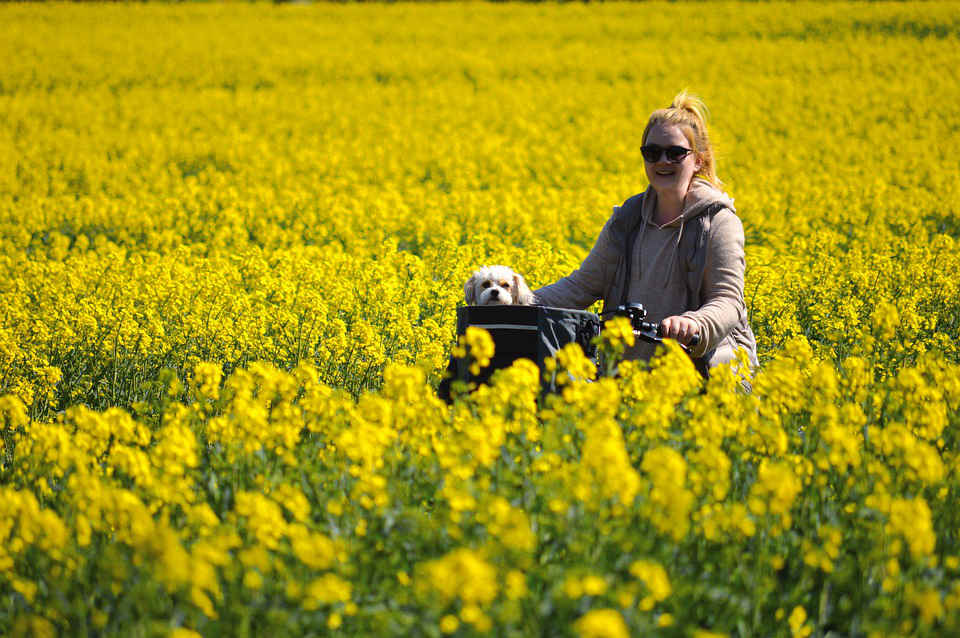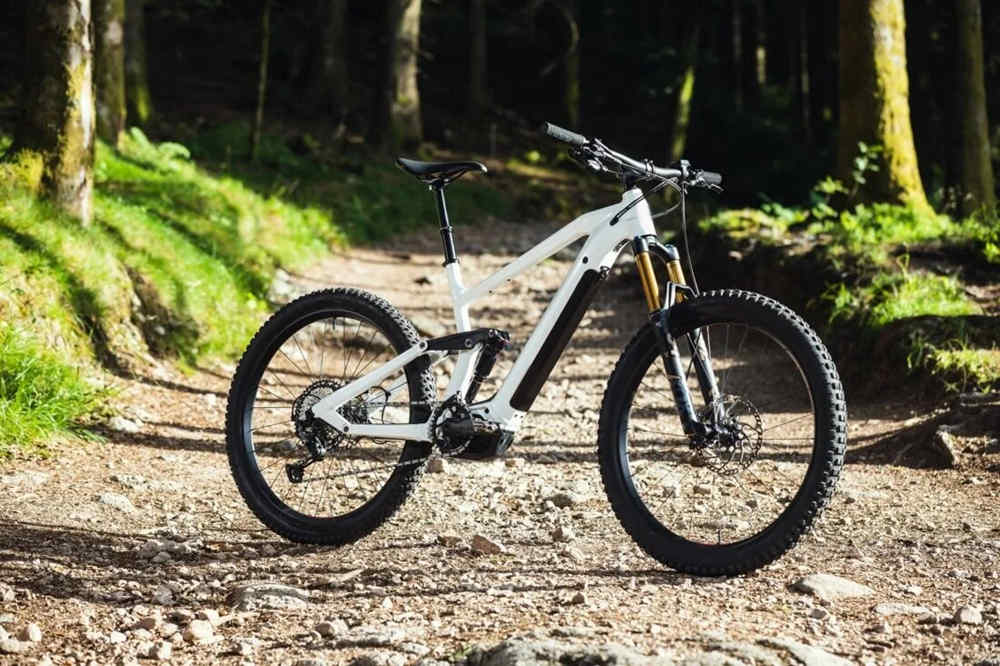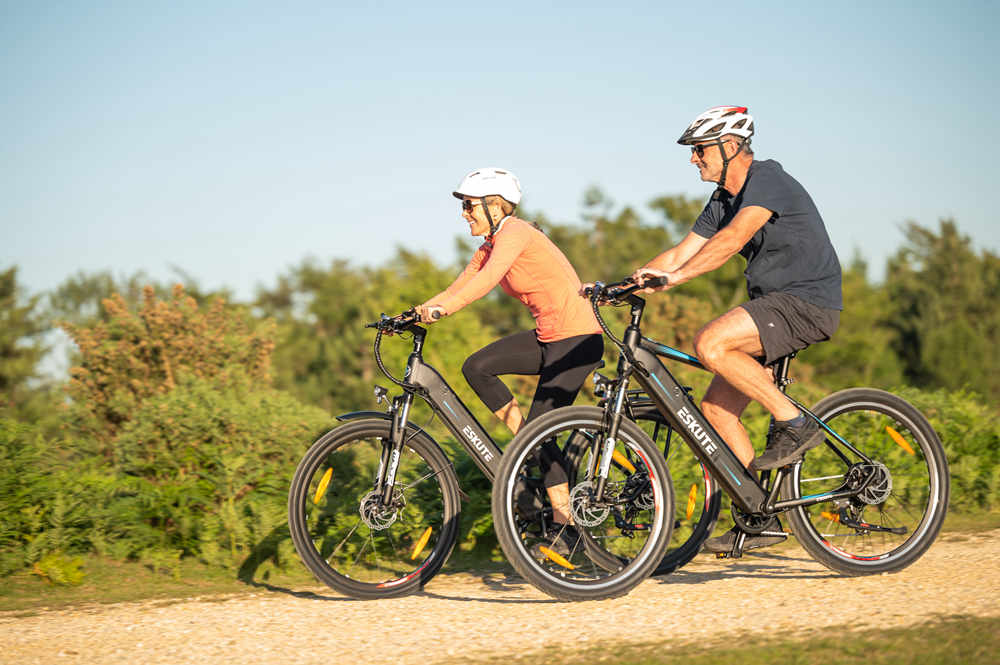Navigation
Biking is a fun way to stay in shape and burn those extra calories. This activity is not only reserved for humans; dogs can participate too! Every dog needs exercise to stay in shape while staying active. And what better exercise for you and your pet than biking?
However, before you go biking with your dog, there are safety measures you must follow to ensure you and your pet successfully carry out this activity. We have explained some of them below.
Various methods to bike with a dog
You may be pleased to know that you can cycle with your dog in several ways. So, if one method doesn't work for your pet, you can try another. Here are the four common ways to cycle with a dog.
Cycling with baskets

Baskets are handy and effective for transporting small dogs weighing less than 12kg. We assure you that your dog will love this. A great example is the bike basket from Eskute. This product provides a comfortable platform for your dog to enjoy rides. Furthermore, these baskets can remain on your bike without impacting your daily rides.
You can quickly start biking with your dog without tedious installation steps. In addition, baskets can be used for storing other items, making them the ideal unobtrusive transport option for your pet.
However, biking with your dog in the basket will take some time because the extra weight will affect the bike's handling. Moreover, the weight may not be properly distributed, affecting the bike's balance.
Cycling with trailers

A bike trailer is an excellent choice for biking with larger dogs and multiple small dogs. Trailers are typically available in various shapes and sizes. Therefore, these vehicles are great for carrying your pet or pets on fun bike rides.
The weight limit on dog trailers varies, but they usually range from 30kg to 50kg. Bear in mind that cycling with a trailer requires a little work. You need to be able to control the bike with the trailer, which can be challenging because of its size.
Cycling with cargo bikes

Cargo bikes transport your dogs, children, luggage, etc. These bikes are the total package. They offer a comfortable ride for riders and their pets. It's not uncommon for their boxes to have weight limits of 100kg, which can accommodate large dogs. We suggest you test-ride the cargo bike before purchasing it to ensure it meets your needs.
Like baskets, cargos allow dogs to sit up front and take in all the sights and sounds of the ride. However, knowing how far your dog leans over the rails is important. You don't want your pet falling off and getting hurt.
Cycling with Your Dog Running
This method is best suited for large dogs because most small and medium-sized dogs may find it difficult to keep up with the bike's pace due to their shorter legs. It is best to use a dog leash directly attached to your wrist or bike —Remember, do not use the handlebars.
When biking with your dog beside you, starting slowly, with short distances and slow speeds, is best. Don't forget positive reinforcement. Give your dog treats, praise, etc., for encouragement. Then, gradually increase the distances if your pet responds well.
Remember, be mindful of the distance and terrain your dog runs on. Hard or rocky terrain may cause joint problems for your furry friend. Furthermore, check the weather before you start riding. Do not ride when it's hot outside, as your dog gets dehydrated faster.
Tips for cycling safely with your dog
Before biking with your dog, you must follow certain safety precautions to ensure fido doesn't get hurt. Here are five safety tips when cycling with your dog.
Know Your Dog
Our first tip focuses on how well you know your pet. Before embarking on bike rides with your pet, you must be certain your pet can keep up. Ensure your pet is in the right shape for such an activity. That's why it's crucial to consult your vet to know if your dog is up for it. If your dog is overweight, it would be best to postpone the biking rides until it sheds some weight. We recommend starting with dog walks before progressing to a faster pace.
Control Your Speed
Don't ride too fast; your dog will get hurt easily, especially small dogs. If you ride an e-bike, you'll spend less effort pedalling and should pay more attention to the current speed and road conditions.
Be Mindful of the Weather and Terrain
Ensure you avoid riding over long distances, on rocky terrain, and in extreme heat. The entire ride should be slow and steady, with breaks in between. Also, check in with your pet frequently to ensure they enjoy the ride and are not overly exhausted. Once you notice your dog is tired, it's probably time to stop.
Attach the Dog with Care
A leash is a necessary accessory when riding with your dog. You don't want your dog running out of control. When leashing your pet, ensure you don't wrap the dog's lead around the bike's handlebars. That is because you could lose balance when your dog suddenly turns, injuring you and your dog. Instead, wrap the dog's lead around your wrist and change directions with one hand while controlling the bike with the other. In addition, we recommend keeping the lead short so your dog does not run in front of the bicycle.
Pay attention to the Paws.
Consider protecting your dog's paws from any cuts and bruises which can hinder its mobility. After all, your dog needs healthy paws to run. Pay special attention to how the paws look before and after every ride. Luckily, there are various paw protectors available. So, it would help if you considered getting extra protection for your pet.
Get the Necessary Supplies
Once your vet clears fido for biking, you must purchase the necessary supplies to ensure your dog stays safe. Here's what you'll need:
- A dog leash that can be attached to the bike. Also, carry an extra leash along for dog walks.
- A dog harness to attach the dog's lead.
- First-aid kit for dogs.
- Water and treats to keep your dog hydrated and engaged.
How far can you ride with a dog?
For a start, we recommend biking with your dog for two miles. This way, you can gradually improve your dog's stamina before embarking on longer and more challenging distances. Once you and your furry companion ride have completed the designated distance, stop and continue another day. which gives the muscles of your dog enough rest.
At the end of the bike ride, it is also important that you pay attention to how your dog behaves. It is the clearest indication of whether your fido loved the ride. When in doubt, cover shorter distances and at a slower pace.

Conclusion
Cycling with your canine is an excellent way to foster the bond with your dog. Start slowly as this gradually builds up your dog's stamina. Before you know it, your pet can join you on longer rides. Don't forget to experiment with other cycling methods.
If you own a smaller dog, cycling with your dog in a basket will be ideal. All you have to do is purchase a basket, install and start riding! If you're not sure of a suitable basket to buy, we recommend the Eskute rear basket. For larger dogs, our other products on offer will tickle your fancy. So, contact us and take the first step to a fruitful riding experience with your buddy!












Leave a comment
This site is protected by hCaptcha and the hCaptcha Privacy Policy and Terms of Service apply.